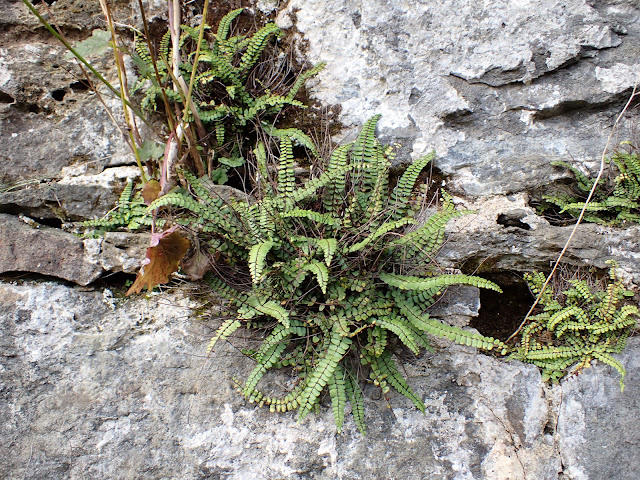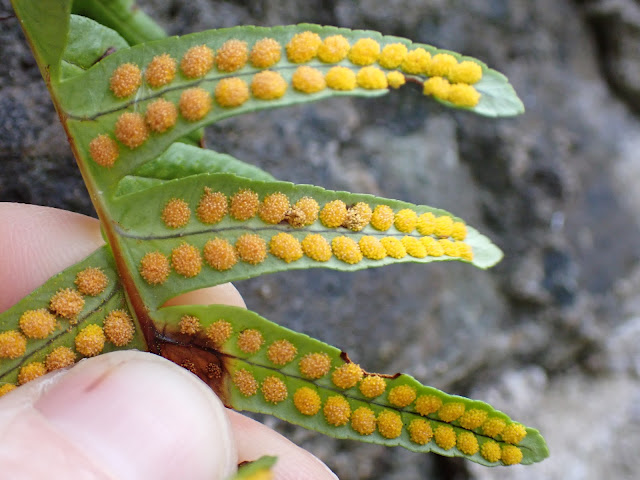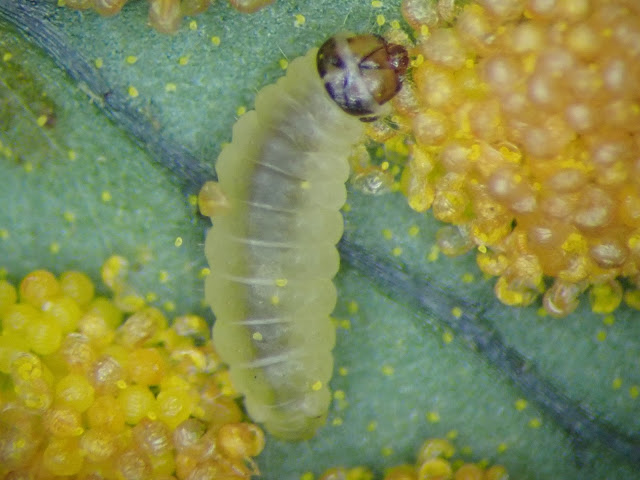I had managed to book almost two weeks holiday from work. As soon as my shift was over, I showered, flung some stuff into the car and hit the road. My destination was Cornwall and my plan was simple; to spend a spell of time with my beautiful Polish maiden. It's a long drive from Skye to Cornwall and, despite making excellent time on the motorways, I didn't arrive until just before dawn. What I hadn't anticipated was to be side-swiped by Storm Ciaran, which I blundered into whilst crossing Bodmin Moor. I can't say I've ever driven through such ferocious rain before and I actually developed a dull ache in my forearms from trying to keep the car from being gusted clean off the road! I eventually made it into the sheltered back lanes but, having already made my way around a number of smaller trees partially blocking the road, my route was entirely blocked by a large fallen tree, complete with the power lines it had pulled down. Bugger. The resultant detour was not a short one. The storm had by now passed, and daylight was resolutely forcing its way through the heavy cloud cover by the time I reached Portscatho. A short while later and I was knocking the window in an attempt to rouse my princess. The door opened, she smiled a sleepy smile, and then we stayed indoors for several days. 'Reacquainting', I think you could probably call it...
Eventually, after three days of 'reacquainting' until we could reacquaint no more, cabin fever set in and I suggested we visit the Eden Project. An hour later we were walking through the entrance of the Rainforest Biome. The last (and first) time I visited Eden Project was in 2014. My initial impressions inside the biome were that it was a lot more vegetated than I recalled and that it was nowhere near as humid and sweat-inducing as the last time I was here. Personally I wasn't complaining.
.png) |
| The Eden biomes are so huge I've had to stitch two images together to fit them all in! |
I was here for two reasons, firstly because Kami had never been here before and on a wet day it seemed like a sensible place for us to visit. And secondly, having looked through BUBO Listing pages to see what other folks had seen that I hadn't, I realised that it held a handful of lifers for me. If only everyone would fill in the place/date columns on their BUBO lists! We grinned at the small forest-partridges running around (probably eating all my lifers...) and then entered properly.
A short way inside the entrance to the Rainforest Biome stood a large sign telling us about several of the inhabitants that occur here.
 |
| The tiny Technomyrmex albipes was abundant everywhere, seen here on a yellow sign |
 |
| I'd seen the ant and Australian Cockroach before, but Surinam Cockroach would be a lifer for me |
I wondered how best to search for the cockroaches, it seemed unlikely they would be simply walking around on the path ahead of me. I spotted ropes looped around handrails and wondered if anything would be hiding away within. Kami quickly got in on the act and started checking too, which I was pleasantly surprised to see. Invertebrates generally get squished against the wall whenever Kami is nearby.
 |
| Despite checking quite a few rope loops all we could find were Australian Cockroach nymphs |
No luck with the Surinam Cockroaches, but there would be other things to find, of that I was certain.
 |
| Hmmm...not quite what I had in mind! |
 |
| The only adult Australian Cockroach that we found was this squashed one |
My main target, other than Surinam Cockroach (of which we never did find any) was a tropical earwig, reputedly quite easy to find by lifting objects sitting in soil. Annoyingly, all the ornamental stones were all cemented into place, but I spied a couple of large plant pots sitting in front of a wooden hut. Nobody appeared to be watching me very closely, so I lifted the pots and straight away disturbed a small earwig, which immediately began burying itself in the loose gravel
 |
| Nymph Euborellia sp, my first tropical earwig |
 |
| Euborellia habbo shot |
I was initially somewhat confused as to which species I'd found. I was expecting
Euborellia arcanum which have deep yellow legs, not pale ones with dark rings as seen here. There's a second hothouse-restricted earwig that occurs in Britain, the Ring-legged Earwig (
Euborellia annulipes) and I thought it was that. But then I realised the pincers were the wrong colour and so I then wondered if it was a species 'new' to Britain. Luckily for me, Mark Telfer, the king of finding weird stuff new to Britain, later assured me that my earwig was simply an immature
Euborellia arcanum, this being the only earwig species known from the rainforest biome. Still, it's a big place and I'm sure there are plenty of 'new to Britain' species awaiting discovery. Mostly fungal pathogens I expect, but quite probably a few inverts too. I found
this image of a 2mm long camel spider (Solifugae) that was sieved from the Eden Project soil, though presumably from inside the Mediterranean Biome. I wonder if they're breeding, or have been refound/identified yet?
Euborellia arcanum is
number 6840 on my PSL and my third species of earwig in Britain, which is about half the species on offer. More work required.
A little further along the path I hit earwig jackpot. Several pieces of slate were laying on an earthern bank, each with a minimum of four or five adult Euborellia arcanum hiding beneath. My earwig tally suddenly shot up from one to over twenty! These were almost exclusively adults, all exhibiting deep yellow legs. Rather annoyingly they all sped off in different directions as soon as I uncovered them, and for some unknown reason I'd disabled the LED on my camera and turned the ISO setting to about 200. In a dimly lit environment. Foolish boy.
 |
| One of the maybe twenty or so blurry Euborellia arcanum found hiding beneath bits of slate |
 |
| Kami quickly grew bored of watching earwigs. She can be a bit strange like that. |
We wandered the Rainforest Biome for at least another hour, then continued through into the far less humid Mediterranean Biome. I had noticed several Robins and Dunnocks plus a single Wren in the biomes which doesn't say very much for the site biosecurity. I mean, if birds can get in, what on earth could get out?
Kami had to make a family phonecall, which lasted for probably twenty minutes. Ideal, that gave me plenty of time to do a thorough check beneath the mass of loose stones sat in dry gravel along the raised borders. Within moments I was eye-balling several very fast, pale woodlice with noticeably stepped body outlines. Oooh, they're certainly not native to Britain! I grabbed my camera and, after tinkering with the settings, started taking pics.



I didn't know what species these could be, and I hadn't come to Cornwall with any of my entomological or collecting gear. I just hoped it was a species already known from within the biome and not a possible 'new to Britain' species. I took more pics, noticing while I did so that some individuals were paler than the rest whilst a couple were very noticeably darker and more strongly patterned. I concentrated on the body shape, the uropods and the flagella and came to the conclusion it was probably a single-species population exhibiting a range of pigment colouration. At least that's what I hoped I was seeing. Then a Porcellio scaber blundered through, dashing my hopes that only one species occured here.
 |
| Assorted images of my mystery woodlouse species |
There were also a few moderately large spiders hiding away amongst the stones, one of the Eratigena types I think. Again, I just took pics and hoped for the best. I haven't pursued the ID of these, without microscopically examining the pedipalps or epigyne of a mature animal (neither of which are particularly prominent in this genus) it's nothing much more than a guessing game.
 |
| Quite common between/beneath larger rocks in the dry bank alongside the path |
 |
| Presumably telling her mum all about the exciting earwigs and woodlice we'd seen... |
It was a long phone call, spoken in very rapid Polish. In all honesty, I doubt there was very much chit-chat about hot-house invertebrates. But it did allow me time to do my nerdy nature stuff in peace and quiet. After I'd shown Kami the woodlice, and pointed out a few scale insects for good measure, we continued around the biome for another half hour or so. I preferred the Rainforest Biome, it just seems more invert-infested than the Mediterranean Biome does.
 |
| I think these sculptures portray some sort of ancient beating tray and pooter usage? |
I spent a little while trying to figure out the woodlouse and tentatively came to the conclusion that it could be
Porcellionides sexfasciatus, which Mark Telfer readily agreed with once I'd sent him a selection of my images. It's a species already known from this biome, but not from anywhere else in Britain, as far as I know. Crippler! The BMIG page for it is
here and you can read the paper describing it as new to Britain
here. Porcellionides sexfasciatus is
number 6841 on my PSL and my 24th species of woodlouse in Britain (25th if you include Sea Slater, which I'm not).
At some point during the course of our visit, I suggested to Kami that she could maybe consider putting her pan-species list up on the mighty
BUBO Listing, after all she'd now seen
Euborellia arcanum and
Porcellionides sexfasciatus, both of which have terrific grippage value. She shot me a withering look and muttered something about nerds or sad people or something. Oh well, it was just a thought...
There was one final species that I hadn't seen yet, but ought to be here somewhere. I drew a blank in the biomes, but finally found it at the exit door from the shopping section to the outside world. Next to automatic sliding doors seems to be a favoured habitat for these spiders.
 |
| Uloborus plumipes aka the Hot-house Featherleg Spider |
I had just a few more days with Kami before I was heading off to stay with Mark, Jo and Bradley Telfer on the Isle of Wight. They were still living in Bedfordshire when I last stayed with them, but Mark had already let slip that he was planning some sort of a whistlestop tour of the island for me. Bring it on, I say!
.png)


















































.png)







.png)